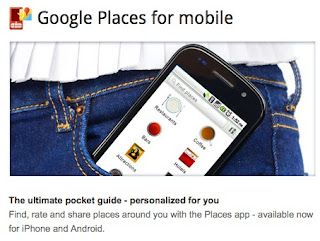News on the boards is that Google are dropping support for barcodes from their retail and location services (e.g. Places). Interesting stuff and that would hint that they favour the use of NFC, this being their other big focus on identification in the real world. This is as a result of field trials in local retail deployments in the US.
This news kind of plays into the hands of those of us involved in NFC deployments, where there is a constant reference to QR codes and 1D barcodes as a 'universal' solution for customer identification.
Of course, the truth is that there is no universal solution for using a mobile phone as an identification device as there is such a large legacy of older handsets with neither have screens that can support a barcode display, nor have the chips that are needed for NFC.
So, where is Google going on this in the short term?
Options include the use of RFID Stickers, which emulate the NFC experience through the same radio link from an ID card to the point of sale. These can be attached to any handset and mimic the same 'tap' action by the customer and so can be seen as an aid to transition people from today to the eutopia of universal NFC enabled handsets....
Others include 'bump' technology, with a cloud server linking your phone's physical bump to a similar sensor on the point of sale - OK if your phone has an accelerometer, but then we are back to the whole smart phone scenario, so it is not mass market.
My personal view (which is skewed by the business I am in of course!) is that Google will go for the NFC/RFID option as in time this is the technology that all point of sale PIN Pads will support. You cannot ask a retailer to put in hardware that only supports a minority of their customers, so by deploying PIN Pads and readers that support both normal payment cards (Chip & PIN and Magnetic Strip) as well as NFC Phones and RFID Stickers, the merchant can be sure that they will get a return on investment, especially if they use the RFID for non payment services today, such as loyalty and couponing across their customer base.
This approach also fits in well with their Android platform, who's recent 2.3.3 release had NFC API support as it's headline addition. Handsets such as the Nexus S, Galaxy S II and the Wave are all smart and desirable handsets, with an increasing number of social and commercial applications appearing on the Market.
Let's hope Google share this technology and provide a means for third parties to access the keys that enable these phones to join the growing number of services out there.






No comments:
Post a Comment